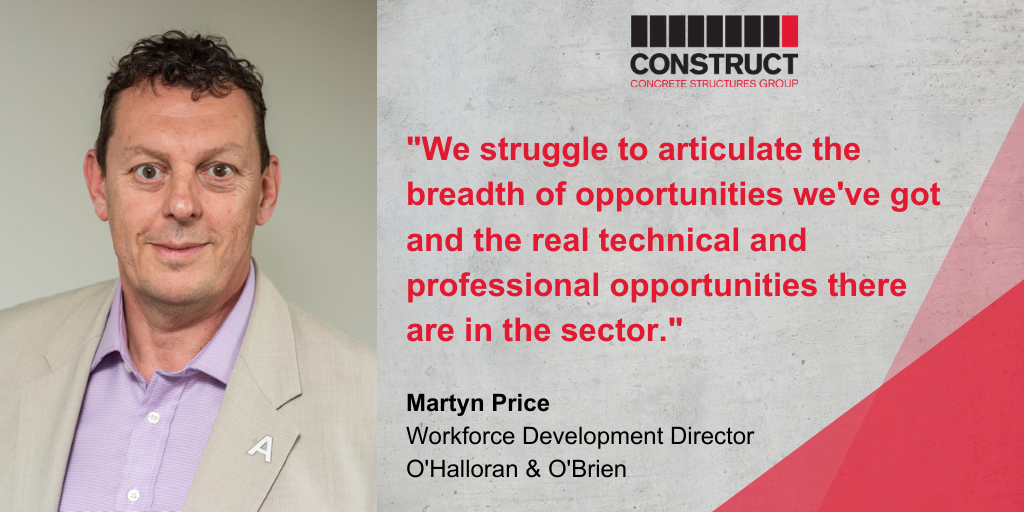
Tell us a little about your background.
I left school at 16 and started a carpentry construction apprenticeship programme and in total spent eight years at college on construction training programmes. Having set up my own company at 23, one thing I was really keen on was workforce development and ensuring there were professionally qualified, competent people in the industry.
About five years ago I was offered this role at O’Halloran & O’Brien Ltd, which turned out to be the perfect fit for me. It’s a really great company with a fantastic culture, which is all about values, training and building relationships.
What is the main challenge currently facing the concrete structures sector?
During my career, I’ve directly employed over 250 apprentices and been responsible for around twice that number with other companies that I’ve helped to develop apprenticeships. At the CCATF today, we’ve got 160 construction employers and stakeholders who between them are responsible for around 10,000 construction apprenticeships.
But this sector has an image problem. Somehow, we struggle to articulate the breadth of opportunities we’ve got and the real technical and professional opportunities there are within the sector. It isn’t all about muddy boots and dirty building sites – this is really about the high quality, highly academic levels of ability. I think that’s an industry problem. We still need those technical and professional people in the sector, but we also need more formalised and structured entry pathways.
How can the sector tackle this problem?
The answer lies in collaboration. For example, it might be easy to fill a core discipline course with people from the local area, but a group of people wanting to do a formwork course might be quite disparate geographically. So, if we can’t bring our resources together through CONSTRUCT membership and get everyone to support these courses, they won’t be sustainable.
I would also like to see more case studies of individuals who have come into the sector and progressed well through apprenticeships or internal programmes. CONSTRUCT has a great opportunity to really showcase some of the talent we have, along with the different roles on offer.
What is the biggest opportunity for the concrete structures sector?
The only way we’re going to be able to partly resolve some of the housing challenges we face is to build upwards, but to do it with a quality build. I think concrete structures is a progressive and expanding subsector of the industry and there’s a lot of regeneration going on, particularly in large conurbations and inner cities. We haven’t got the space for large scale green or brownfield sites, so tackling the issue could be through the erection of quality concrete frames, with reasonably speedy construction time periods.
But we need to address recruitment. If we can harness the potential of CONSTRUCT members, we could create sustainable interest, perhaps with a robust school engagement programme. We’ve got a lot of latent potential in this sector but the one thing that holds us back is the ability to find the labour to meet it, which makes the skills gap issue even more pertinent.
You can download the PDF interview here.